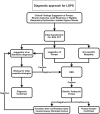Recommendations for Infantile-Onset and Late-Onset Pompe Disease: An Iranian Consensus
- PMID: 34621239
- PMCID: PMC8490649
- DOI: 10.3389/fneur.2021.739931
Recommendations for Infantile-Onset and Late-Onset Pompe Disease: An Iranian Consensus
Abstract
Background: Pompe disease, also denoted as acid maltase or acid α-glucosidase deficiency or glycogen storage disease type II, is a rare, autosomal recessive lysosomal storage disorder. Several reports have previously described Pompe disease in Iran and considering increased awareness of related subspecialties and physicians, the disease's diagnosis is growing. Objective: This guideline's main objective was to develop a national guideline for Pompe disease based on national and international evidence adapting with national necessities. Methods: A group of expert clinicians with particular interests and experience in diagnosing and managing Pompe disease participated in developing this guideline. This group included adult neurologists, pediatric neurologists, pulmonologists, endocrinologists, cardiologists, pathologists, and physiatrists. After developing search terms, four authors performed an extensive literature review, including Embase, PubMed, and Google Scholar, from 1932 to current publications before the main meeting. Before the main consensus session, each panel member prepared an initial draft according to pertinent data in diagnosis and management and was presented in the panel discussion. Primary algorithms for the diagnosis and management of patients were prepared in the panel discussion. The prepared consensus was finalized after agreement and concordance between the panel members. Conclusion: Herein, we attempted to develop a consensus based on Iran's local requirements. The authors hope that disseminating these consensuses will help healthcare professionals in Iran achieve the diagnosis, suitable treatment, and better follow-up of patients with infantile-onset Pompe disease and late-onset Pompe disease.
Keywords: Iran; Pompe disease; consensus; enzyme replacement therapy; guideline.
Copyright © 2021 Fatehi, Ashrafi, Babaee, Ansari, Beiraghi Toosi, Boostani, Eshraghi, Fakharian, Hadipour, Haghi Ashtiani, Moravej, Nilipour, Sarraf, Sayadpour Zanjani and Nafissi.
Conflict of interest statement
The authors declare that the research was conducted in the absence of any commercial or financial relationships that could be construed as a potential conflict of interest.
Figures






References
-
- Pompe J. Over idiopathische hypertrophie van het hart. Ned Tijdschr Geneeskd. (1932) 76:304–11.
Publication types
LinkOut - more resources
Full Text Sources

